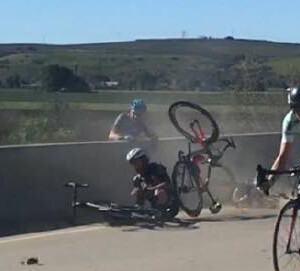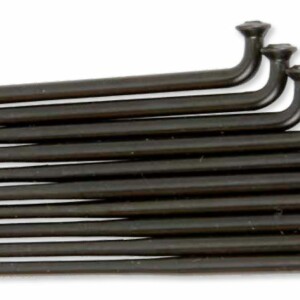It’s great to see there are more women riding, stepping up to racing and taking the pursuit pretty seriously. If you’ve thought about joining them, then this article and the subsequent series might just help you get there.
There’s lots of information out there but most of it is focused on men and while a lot of it works well for women too, there are some specific areas that do not span the gender divide. Here are a few areas that women might need to give special consideration; we’ll deal with each of these in more detail in coming issues.
Women tend to approach cycling quite differently to men. When a man takes up cycling he’s usually pretty gung ho and remembers the skills he gained back in his childhood riding a BMX. For women it’s often a very different process. Although many of us rode bikes as children we usually did a few laps around and then stopped for a chat. There are of course exceptions to this stereotype, but generally speaking when a woman takes up cycling she’s not very skilful on a bike and definitely not very confident.
So if you want to call yourself a cyclist there are a number of steps you can take.
The first step is to get the right equipment. If you want to ride with a club, join in bunch rides or even try racing, then you need a road bike and it needs to be good quality. Don’t become obsessed about what level of components it’s got. Set yourself a budget and then buy the best bike you can for your money. And definitely don’t ‘settle’ for someone else’s hand-me-down, particularly if it’s not the right size for you.
It’s far more important to focus on the quality of the frame, rather than whether it has Shimano this or SRAM that. Don’t get obsessed with groupsets and forget about the fundamentals. You might also consider a women’s specific bike. There are a number of companies like Trek, Specialized and Giant who have put a lot of research into their women’s bikes and they’re definitely worth a look. So find yourself a bike shop where you feel comfortable and valued as a customer.
You will also need some good quality gear to go with it so don’t scrimp on items like your helmet, shoes and apparel. The old adage ‘you get what you pay for’ is never truer than with cycling kit. If you buy cheap stuff it will fit badly, wash poorly and you’ll never feel comfortable in it. It’s better to buy a few quality items than lots of cheap stuff.
The next thing you need to do is set yourself a goal. Don’t make it so easy that you’ll achieve it in the first month; make it a challenge. And make sure it’s specific like, ‘I’m going to research all the cycling clubs in my area, join up and try my first race by the middle of this year’. Or it could be ‘I’m going to participate in a particular charity ride that is 160km’. Once you’ve settled on your goal you’ll need to work out how you’re going to get there.
It’s important to give yourself time. Don’t sign up for a huge ride that’s only a couple of weeks away and expect to be in any sort of form to achieve it (I’ve seen lots of men do this). Choose something that is more like six months away and work your way towards it. It takes plenty of time to have any level of basic conditioning and to gain confidence.
You should ride regularly and make cycling your main form of exercise (at least three quarters of your time). That doesn’t mean you should give up your regular gym sessions but if you’re really serious about riding, then you should tailor your sessions to complement your cycling goals.
When Sydney-based rider Rebecca Frater took up cycling in her late 20s, she realised she was playing catch-up with her younger peers, many of whom had been riding and racing from a young age.
“I knew I wanted to give cycling a go after watching my little brother Aaron riding on the track. So I threw myself in the deep end by joining him on one of his hand-me-down bikes (lucky it was the right size). At my first race I felt demoralised but was proud of myself for giving it a go.
“The next step for me was to attend regular club training rides with my now cycling Club Lidcombe-Auburn Cycle Club (LACC) to challenge myself. It was here that I met my husband Matt who was a more experienced cyclist and helped me develop further.
“I set my own training program and worked to determine the gaps in my ability and worked on those. Unfortunately we women often have to race with the men because there’s not a great deal of women’s only racing, but it teaches you to train hard just to be able to keep up.
“That’s why women’s racing is really important and we need to encourage more women to join in to make it real racing. Four riders does not make a race, particularly if we are all of very different abilities.
“I also think that it’s important not to focus just on racing. There is lots of pressure to race but riding can be whatever you want it to be. Racing is only one aspect. The most important thing is to set your own target or goal so you have something to aim for, everyone has a different goal,” said Rebecca.
So, like Rebecca, you need to develop a training program and stick to it. You should look for gaps in your ability and find ways to enhance those. It could be through a skills program, coaching, reading a book or doing a program. You could also include some indoor training sessions to mix it up.
One way to advance more quickly is to hire a coach. Sydney-based cycling coach Donna Meehan says that you can’t just hope you’re going to improve by riding lots of kilometres, you need to work at it.
Donna herself became a coach after seeing others who were coached and seeing the huge benefits this brought to their results. She particularly enjoys coaching other women and seeing the great results they can achieve. As a woman she also understands the unique requirements women have in developing their cycling skills.
“You need to stick to a program but also have fun. Your body needs to physically adapt and if you’re coming to the sport later in life you are playing catch up.
“It’s not just physical conditioning that makes you a better cyclist, you also need to develop both mental and physical strengths to get you through the tough spots of your training. Also skills are something that is constantly worked on and refined so that you can remain as safe as possible in race situations.
“Coaching is a very personal bond between athlete and coach, and it’s a two way street. The more info and feedback you give to your coach the more accurate and succinct the training will be for you,” said Donna.
Whether racing is your main aim or not, a cycling club is a great way to step up to the next level and coaches like Donna work with club members. There are hundreds of clubs around Australia, and particularly if you live in a metropolitan area you should be able to pick and choose a club that suits you. Ask other people, both men and women and go along and meet some of the members on a training ride before you sign up.
If you can find a club that already has plenty of female members then you’re going to be more likely to be supported.
St Kilda Cycling Club (SKCC) in Melbourne is certainly the standout when it comes to women’s participation. Gaelene Snelling, who is one of the driving forces behind SKCC’s success, reports that the club currently has 240 female members. About 55 per cent of those have race licences and the remainder hold recreational licences.
It’s certainly not an overnight success story. The club has been working on its women’s activities for a number of years and each year has made improvements.
Gaelene credits the success of the club to recognising that they need to embrace both competitive and recreational cyclists. “It’s not about the racing for everyone. This is a bit of a departure from what you would traditionally join a club for.
“We have a women’s sub-committee with a mission statement ‘To encourage, support and provide opportunities for women of all ages and abilities to reach their cycling goals’.
“Our membership is organic with referrals as one of the key drivers. We believe if you provide a supportive and welcoming environment it’s a winner.
“From the moment a new woman joins she is given information and provided with opportunities to network. Women crave information, what where how when. So different to men who just throw themselves in the deep end.
“We also have a women’s development squad which is for women who may have raced crits over summer, but then ask what’s next for the winter months. Our development squad has two aims; one is to educate, the other is to provide them with opportunities to network with other women who are venturing down the same pathway. They then support each other, it’s far less intimidating standing on the start line when you have a bunch of mates with you,” said Gaelene.
SKCC may be the standout when it comes to the number of women racing but there are also clubs with dedicated women who are working quietly behind the scenes to make clubs more attractive to women like the Lidcombe-Auburn Cycle Club (LACC) in Sydney’s inner west.
Another key aspect of stepping up to the next level is to get your nutrition right. A keen cyclist herself, sports dietician Rebecca Hay works with lots of female cyclists.
“Nutrition is often an after thought with any training program and is often considered when things like fatigue or riders are not seeing the results they want, particularly with weight loss. Training adaptations need to be facilitated by appropriate nutrition strategies – recovery nutrition is one of the most important.
“Busy female cyclists need to be aware of their needs for recovery after training, their need for carbohydrate and for good quality proteins in particular. Not eating right after training leads to hunger later in the day. Being hungry makes it very difficult for any cyclist to manage or reduce body weight. Avoiding carbohydrates in particular will lead to fatigue and inability to work at high intensities. Adding a good quality protein at main meals will also assist with appetite control and optimal recovery.
“When working on increasing performance carbohydrate is necessary – before, during and after riding. Practising eating and drinking during longer training rides must be a part of the development from recreational to competing cyclist. Knowing what you need to consume on a training ride or in a race should become as automatic as the actual process of riding a bike,” added Rebecca.
So if you want to be serious about cycling you need to consider a number of aspects – setting appropriate goals, developing a training program, hiring a coach, joining a club and getting nutrition right. We’ll talk about all these things and more in greater detail in subsequent issues.

